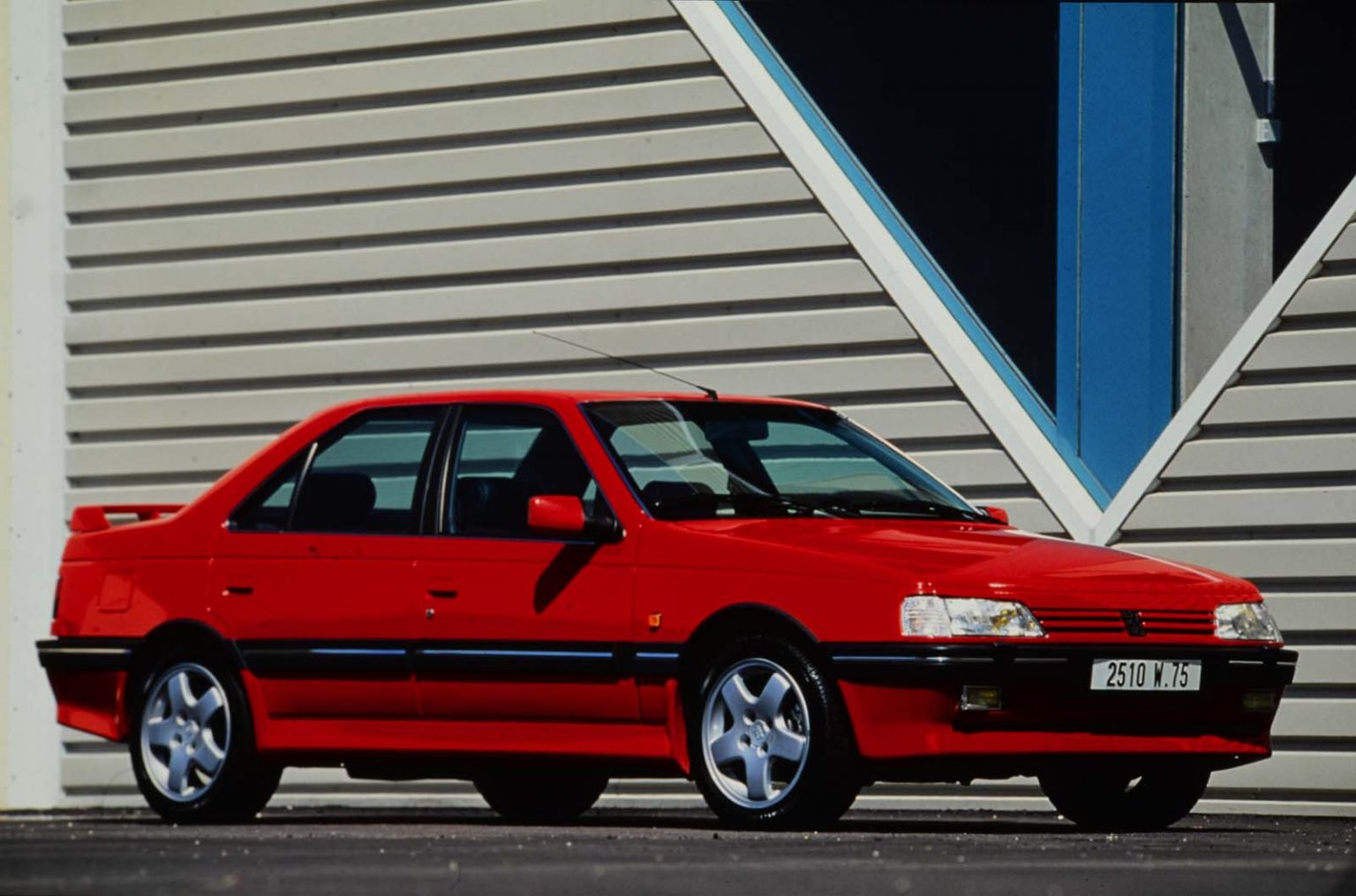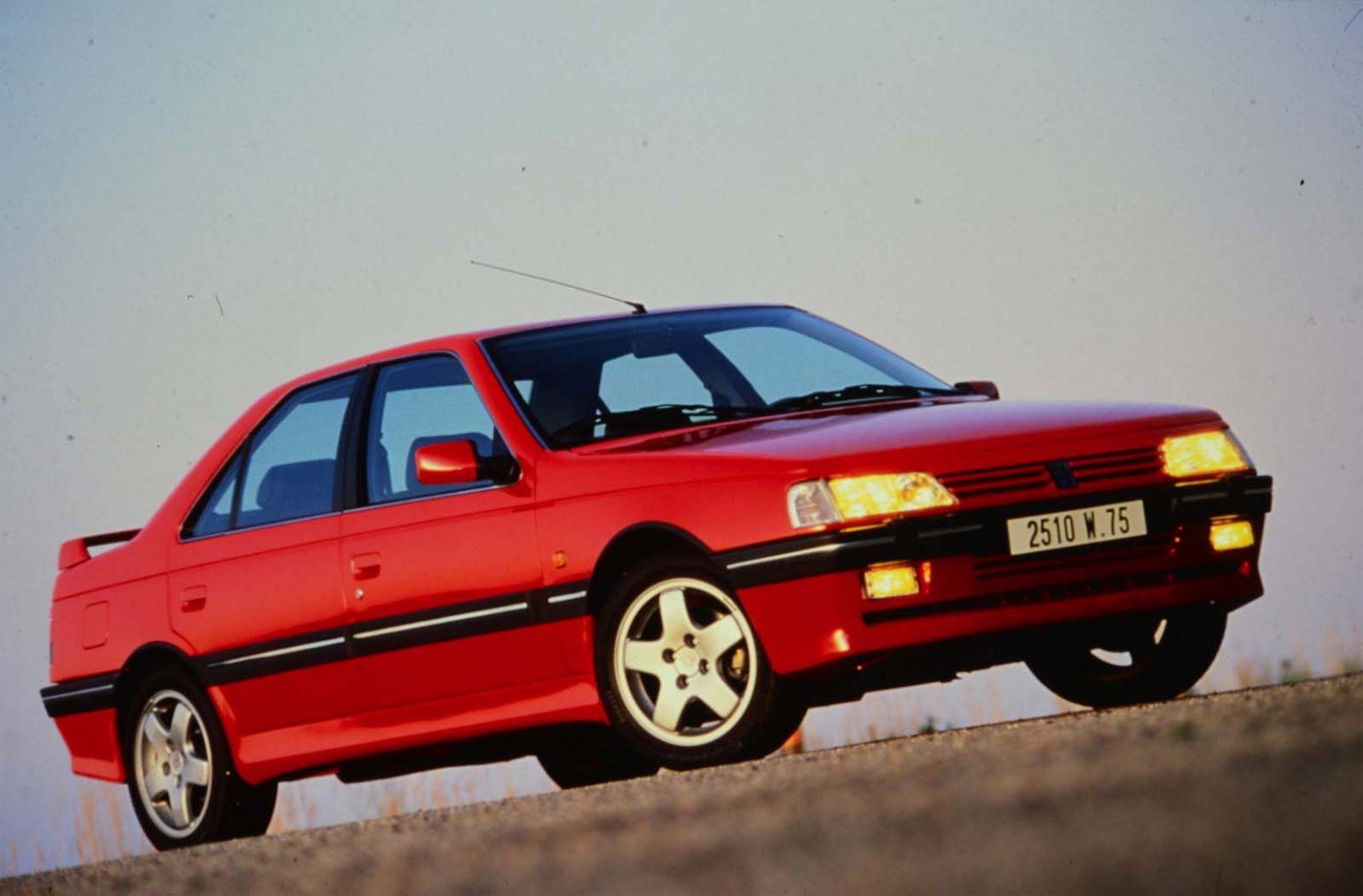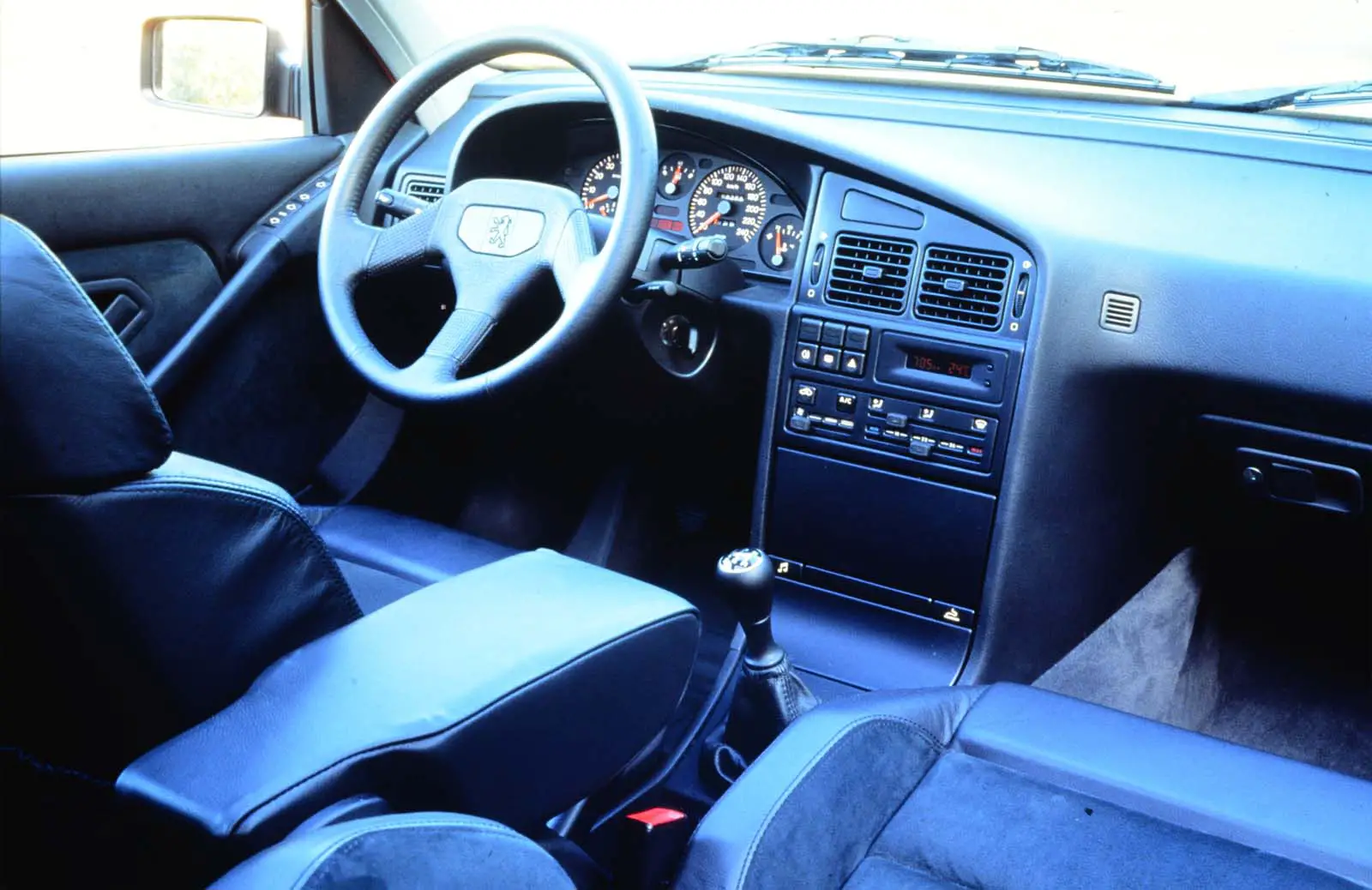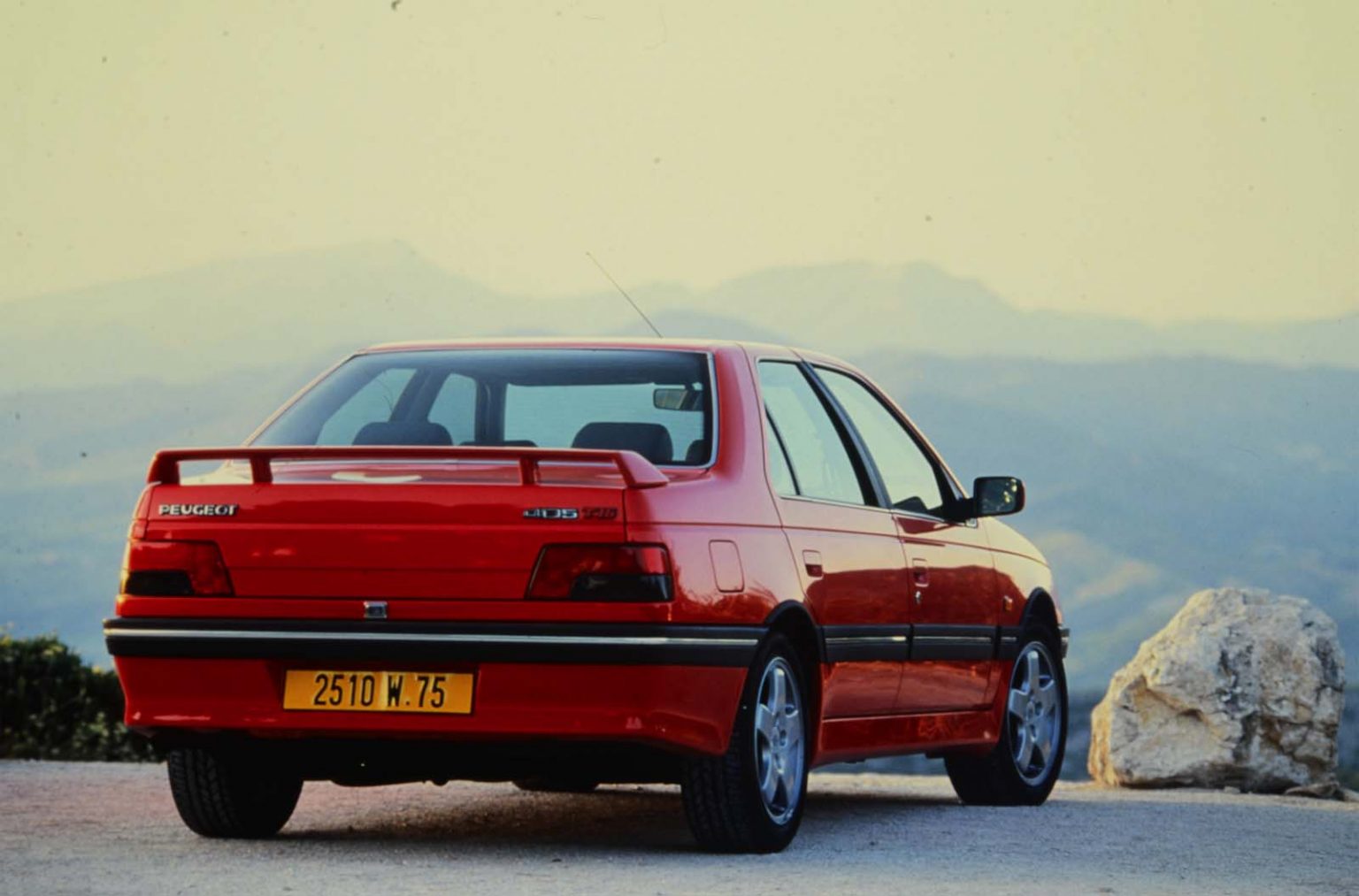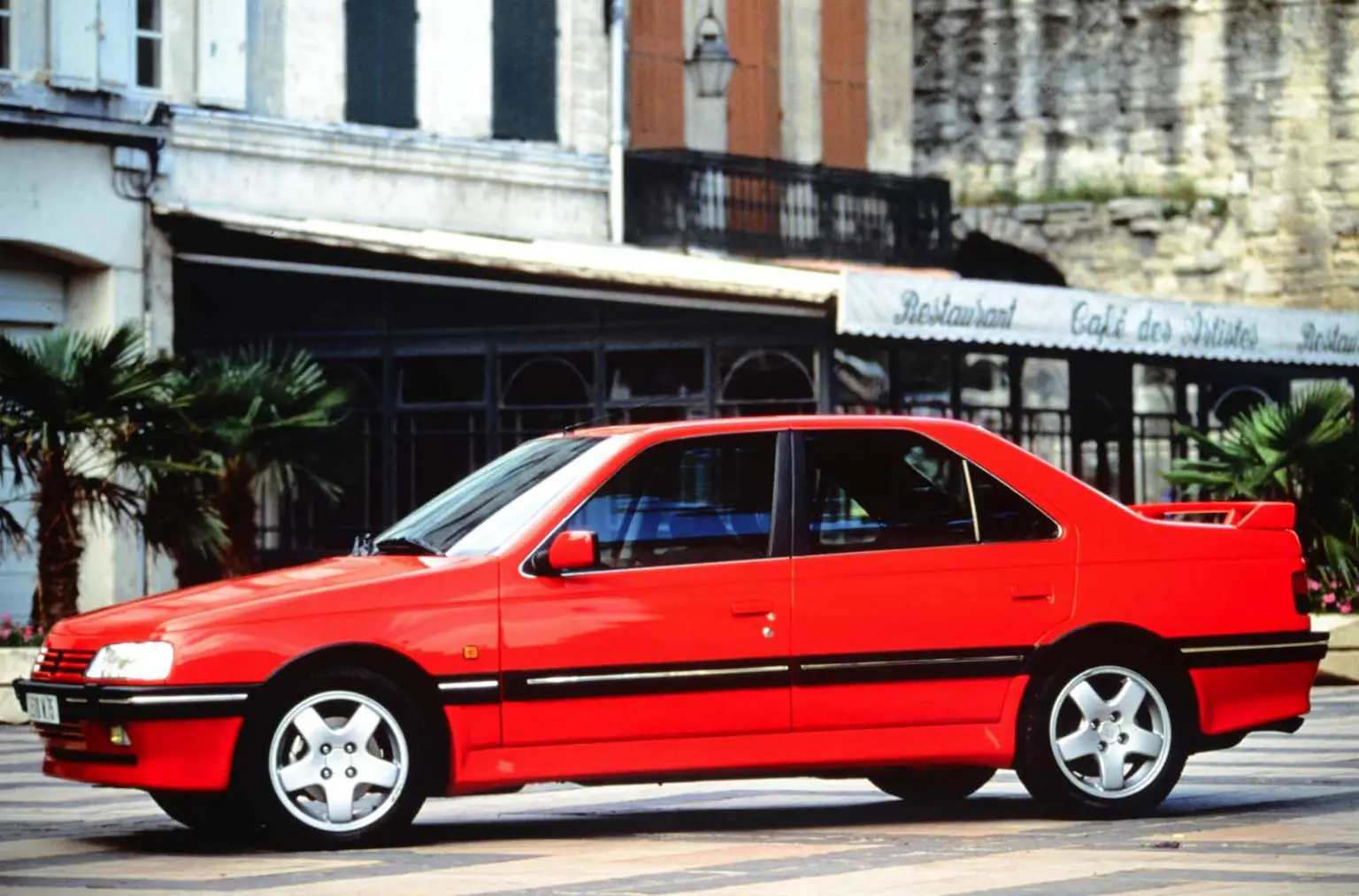
Peugeot 405 T16, Four Wheel Drive, Turbocharged, Overboost And In 1993
The Peugeot 405 T16 was launched in 1993, with a specification might seem familiar today. Four wheel drive, turbocharged with overboost.
Manufacturers have long been producing cars like this, but Peugeot did it in a very understated way. Just like modern cars can have a similar sounding spec with a more discrete look. In some cases, just like the T16, larger wheels are pretty much the only giveaway. The 16 inch wheels here only 1 inch larger than found on the Mi16.
That four wheel drive was permanent and with the overboost 220 bhp was on tap. A top speed of 235 km/h or 146 mph. 0 – 100 km/h, or 62 mph was 7 seconds. Pretty much in line with modern cars, but there were no electronics or automatic gearboxes in the 405 T16. Owners and period road tests suggest that the acceleration figures were somewhat conservative and could be closer to 6 seconds.
The T16 had a 2 litre 16v engine fitted with a Garett turbocharger. The quoted power was 196 bhp with overboost to 220 bhp. This figure has again been said to be conservative, I wouldn’t be surprised if it was either. The overboost is rather neat, inside the turbocharger the inlet flap ahead of the compression turbine moves towards it to allow more air in and in turn better directing the air.
The Peugeot 405 T16 was launched in 1993, with a specification might seem familiar today. Four wheel drive, turbocharged with overboost.
Manufacturers have long been producing cars like this, but Peugeot did it in a very understated way. Just like modern cars can have a similar sounding spec with a more discrete look. In some cases, just like the T16, larger wheels are pretty much the only giveaway. The 16 inch wheels here only 1 inch larger than found on the Mi16.
That four wheel drive was permanent and with the overboost 220 bhp was on tap. A top speed of 235 km/h or 146 mph. 0 – 100 km/h, or 62 mph was 7 seconds. Pretty much in line with modern cars, but there were no electronics or automatic gearboxes in the 405 T16. Owners and period road tests suggest that the acceleration figures were somewhat conservative and could be closer to 6 seconds.
The T16 had a 2 litre 16v engine fitted with a Garett turbocharger. The quoted power was 196 bhp with overboost to 220 bhp. This figure has again been said to be conservative, I wouldn’t be surprised if it was either. The overboost is rather neat, inside the turbocharger the inlet flap ahead of the compression turbine moves towards it to allow more air in and in turn better directing the air.
The performance quoted may be affected by the overboost. You see it is active for a maximum of 45 seconds from opening the throttle fully. So, each gearchange would give you the opportunity to fully open the throttle again. So, the full 1.3 bar of boost could be had pretty much all the time.
The four wheel drive system uses a viscous coupling in the centre diff and supplies 53% of the drive to the front and 47% to the rear. A relatively small difference front to rear but bellies the front wheel drive origins.
The 405 was relatively light for the class of car, but the four wheel drive helped the 405 T16 to tip the scales at 1340kg. Audi’s much less potent 80 2.8E Quattro came in at 1400kg.
The T16 had a 2 litre 16v engine fitted with a Garett turbocharger. The quoted power was 196 bhp with overboost to 220 bhp. This figure has again been said to be conservative, I wouldn’t be surprised if it was either. The overboost is rather neat, inside the turbocharger the inlet flap ahead of the compression turbine moves towards it to allow more air in and in turn better directing the air.
The performance quoted may be affected by the overboost. You see it is active for a maximum of 45 seconds from opening the throttle fully. So, each gearchange would give you the opportunity to fully open the throttle again. So, the full 1.3 bar of boost could be had pretty much all the time.
The four wheel drive system uses a viscous coupling in the centre diff and supplies 53% of the drive to the front and 47% to the rear. A relatively small difference front to rear but bellies the front wheel drive origins.
The 405 was relatively light for the class of car, but the four wheel drive helped the 405 T16 to tip the scales at 1340kg. Audi’s much less potent 80 2.8E Quattro came in at 1400kg.
The 405 T16 from 1993 wasn’t the first turbocharged four wheel drive 405. The Pikes Peak entry of 1988 and 1989 saw a two door purpose built car for the hillclimb. For 1989 and 1990 there was a Paris Dakar version of it too. Similar, but minus the huge rear wing (there was still a large wing) and featuring raised suspension. These cars were a mixture of 405 and the redundant Group B 205 T16.
The engine in the Pikes Peak version had 660 hp and driver Ari Vatanen beat the outright record in 1988 which had stood for five years. This record beating run was the subject of a film by Jean-Louis Mourey, Climb Dance. Bobby Unser Jr replaced Vatanen in 1989 as Ari had moved to the Paris Dakar and won that in both 1989 and 1990.
